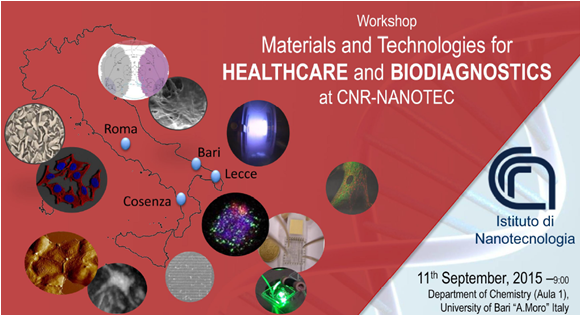“Materials and Technologies for Healthcare and Biodiagnostics at CNR NANOTEC”
Workshop d’Istituto
c/o Dipartimento di Chimica dell’Università di Bari.
Bari, 11 settembre 2015

“Materials and Technologies for Healthcare and Biodiagnostics at CNR NANOTEC”
Workshop d’Istituto
c/o Dipartimento di Chimica dell’Università di Bari.
Bari, 11 settembre 2015